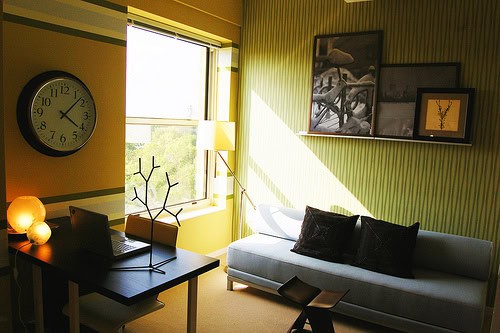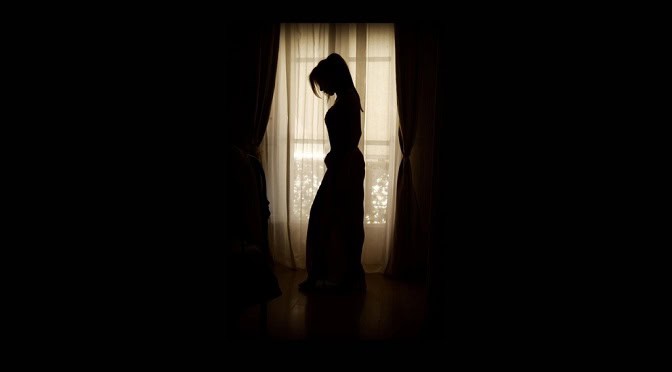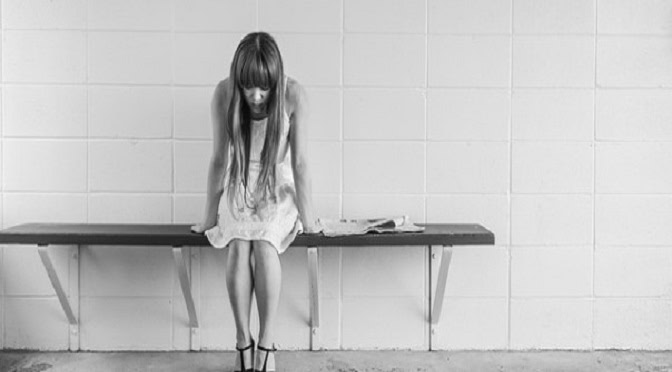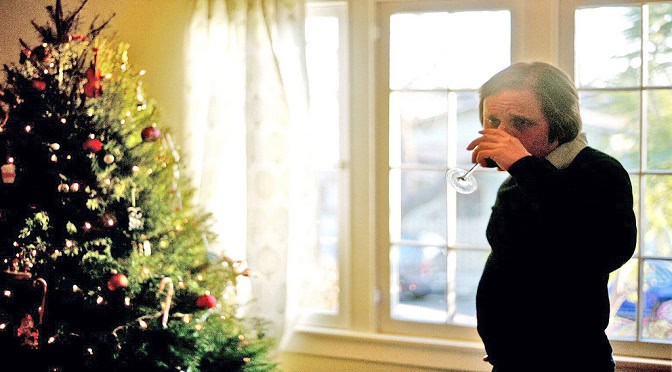Why so S.A.D.?
Cold weather and the short days of winter can make anyone feel depressed. The lack of light and color of winter can leave you feeling gloomy, annoyed, or fatigued. If you have these feelings every year, which makes it tough to function in the months of winter, you may be suffering from Seasonal Affective Disorder (SAD). This type of depression can affect your health, your relationships, and your everyday life.
What is Seasonal Affective Disorder (SAD)?
SAD is a type of depression that occurs during the same season every year, usually wintertime. It is also known as seasonal depression which can affect your mood, sleep, appetite, and energy levels. SAD can take a toll on all aspects of your life — your relationships, self-worth, social life, work, and school. You might be feeling sad, desperate, strained, or stressed, with no interest in activities in the wintertime. However, the summertime might feel completely different to you. There is a less common form of the disorder which causes depression during the summer months, but SAD usually begins in late fall or winter when the days become shorter and darker. It usually remains until the days get brighter in spring or early summer.
Seasonal affective disorder affects about 1% – 2% of the population, particularly women. SAD is most common in people who live at least 30 degrees latitude north or south since the amount of winter daylight you receive changes the farther you are from the equator. Some of these places include Jacksonville, Florida, Cairo, Egypt, and Perth, Australia. However, no matter where you live or how dark and cold the winters are, there is good news…SAD is treatable. Understanding about seasonal depression makes you able to manage or even prevent the disorder.

Symptoms and Signs of SAD
The symptoms and signs of seasonal affective disorder are the same as those for major depression. However, SAD is a little different from depression by the exemption of symptoms in the spring and summer months. People with SAD may suffer some or all of the following symptoms which can have a real impact on your life.
- Changes in sleeping pattern
- Feelings of sadness and despair
- Fatigue and lack of energy
- Appetite and weight changes
- Loss of interest in your usual activities
- Depressed mood, low self-esteem
- Avoiding friends and family
- Stressed, tense and irritable
- No interest in physical contact
Just like depression, the symptoms of SAD can vary per person depending on genetics and geographic region. Usually, the symptoms are mild in the fall and get progressively worse as winter approaches. Then, by spring or early summer, the symptoms die out and you start feeling healthy and normal again. When someone is diagnosed with seasonal affective disorder, they will have experienced these symptoms for two or more years in a row. If your depression feels overwhelming and is negatively affecting you, it’s time to seek help regardless of the timing of the symptoms.
Causes of SAD
It is unclear what the exact causes of seasonal affective disorder are, but most theories point to the reduced number of daylight hours in the wintertime. The shorter days and low sunlight exposure that occurs in winter can affect the body by disrupting circadian rhythms, production of melatonin and production of serotonin.
- Circadian rhythms. Long nights and short days disturb your internal clock. This can leave you feeling tired and lethargic. Your sleep, mood, and appetite are balanced by your body’s internal clock which responds to changes between light and dark.
- Production of melatonin. Your brain produces the hormone melatonin when it is dark to help you sleep. Sunlight during the day triggers the brain to stop melatonin production so you feel awake. When there are short days and long nights of winter, your body may produce too much melatonin, which can make you have little energy and feel drowsy.
- Production of serotonin. Your body’s production of serotonin, a neurotransmitter that helps to regulate mood, is lower when there is less sunlight. This loss can lead to depression and affect your sleep, appetite, and memory.

Risk Factors
- Gender. Three out of 4 sufferers of SAD are women; however, men can often experience more severe symptoms.
- Age. Winter SAD is diagnosed in people aged 18 to 30 in most cases and is less likely to occur as you get older.
- Family history. If you have relatives who have experienced SAD or another type of depression, it puts you at a higher risk for getting this disorder.
Tips for SAD
There are plenty of steps you can take to help yourself feel better when seasonal depression makes it hard to motivate yourself. It does take time to recover, but you will likely feel a little better each day. If you have healthy habits and schedule relaxation and fun into your day, you can help lift the cloud of seasonal affective disorder and prevent it from reappearing in your life.
There are things you can do to keep your life and mood balanced throughout the year no matter how depressed you may feel.
Tip #1: Get as much natural sunlight as possible.

It’s free! Get outside when possible during daylight hours and expose yourself to the sun.
- Take a walk
- Open blinds and drapes in your home and workplace to increase the amount of natural light
- Paint walls in lighter colors or use daylight simulation bulbs
Tip #2: Exercise regularly.
Exercising regularly is a powerful way to fight seasonal depression.
- It can boost serotonin and endorphins. Believe it or not…often regular exercise can treat mild to moderate depression as effectively as antidepressant medication.
- It can help to improve your sleep and boost your self-esteem.
- Try 30 to 60 minutes of activity each day. Something like walking the dog can be a good exercise for you. It is a great way to get outdoors in the sunlight and interact with other people as well.
Tip #3: Reach out to family and friends

Let them support you! To help you manage your SAD, close relationships are important in lowering your isolation. Engage in social activities. It may feel more comfortable to hide at home by yourself, but being around other people will give you a boost. Make an effort to reconnect with friends or start new relationships.
- Meet an old friend for coffee or reach out to someone new like a neighbor or co-worker. Be the one to break the ice even if it feels a bit awkward.
- Join a support group. Just talking about what you’re going through can help sometimes. Being around others who are facing the same problems can help give you inspiration to make positive changes and reduce your sense of isolation.
- Take a class or join a club. Do something for you that is fun.
- Volunteer. Helping others is one of the best ways to feel better about yourself.
Tip #4: Eat the right foods
Keep your energy up and minimize mood swings by eating small, well-balanced meals throughout the day. Eat lots of fresh fruit and vegetables.
- Sometimes the symptoms of SAD makes you crave sugary foods or carbs. Bananas, oatmeal and whole grain bread are the better choice which can boost your feel-good serotonin levels.
- Certain omega-3 fat foods like oily fish, walnuts, and soybeans can also improve your mood.
Tip #5: Make time for more fun
Too much stress can trigger depression no matter what time of year. You should try and figure out the things in your life that stress you out and try to minimize their impact or avoid them.
- Daily relaxation techniques can help you manage stress. Boost feelings of joy and well-being and reduce negative emotions such as anger and fear. Try yoga or meditation.
- Having fun is a great stress buster. Make time for activities that bring you happiness. Do something you enjoy every day.
Treatment for SAD
Some doctors may suggest medication or psychotherapy to treat SAD, but the main treatment for winter SAD is light therapy, also known as phototherapy. This type of therapy replaces the missing daylight of winter by exposing you to a bright light that mimics natural outdoor light. The daily exposure to the light can suppress the brain’s secretion of melatonin which helps you feel more awake and alert.
Light therapy has been effective in up to 85% of SAD cases. But, the timing and length of exposure needed can vary. To find the right dosage, you’ll need support from your doctor or mental health professional. They can help you choose an effective and safe light therapy product.
To be effective, light therapy has to be continued daily throughout the winter months. If you start the light therapy before the onset of symptoms, it may even help prevent seasonal affective disorder.
- Headaches, mild anxiety, jitteriness, early awakening, or eyestrain.
- Can trigger a manic episode in people who are vulnerable.
- Can aggravate an eye problem.
- Rashes can occur.
- Some drugs or herbs can make you sensitive to light.

Medication and Psychotherapy for SAD
Light therapy doesn’t work for everyone to treat SAD or the winter blues. There are plenty of other effective treatment options available and self-help techniques.
- Cognitive behavioral therapy (CBT). The right therapist can help you with your negative thoughts and behaviors. They can help you learn how to manage symptoms and deal with stress in healthy ways. It can be highly beneficial for people with seasonal depression. CBT can be as effective at treating SAD as light therapy or antidepressants, but doesn’t have any side-effects that are risky.
- Medication. Your doctor may suggest antidepressant medication if light therapy doesn’t work for you. Antidepressants act in the brain on serotonin levels to reduce SAD symptoms. The FDA has approved the drug bupropion (Wellbutrin) to treat seasonal affective disorder. But, there may be adverse side effects, as with all antidepressants. It’s always important to look at the benefits versus the risks.
No matter what treatment you decide to use to help manage your depression symptoms, it’s important to combine it with self-help techniques which can even help prevent the yearly return of SAD.
A daily exercise routine and healthy diet is important for recovery in addition to medical attention. If you maintain a regular day-to-day and sleep schedule, it also helps to fight the disorder.
Hundreds of SAD sufferers go undiagnosed and untreated every year. Some people feel too ashamed to seek medical help worrying that they may be accused of being melodramatic or lazy. They fear the social stigma of having a condition that some people believe is a joke.
SAD is a serious illness that has been recognized by medical professionals as a genuine mental disorder. Talk to your doctor if you believe you are suffering from SAD. Don’t struggle alone.
This information is provided to supplement the care provided by your physician. It is neither intended nor implied to be a substitute for professional medical advice. CALL YOUR HEALTHCARE PROVIDER IMMEDIATELY IF YOU THINK YOU MAY HAVE A MEDICAL EMERGENCY. Always seek the advice of your physician or other qualified health provider prior to starting any new treatment or with any questions you may have regarding a medical condition.




